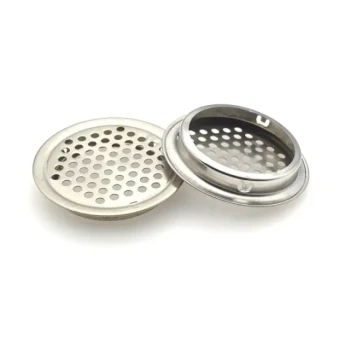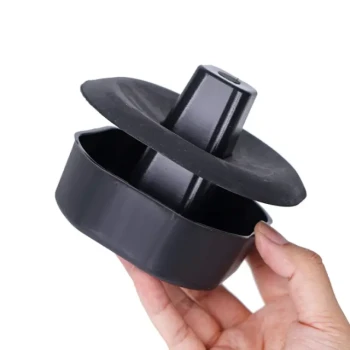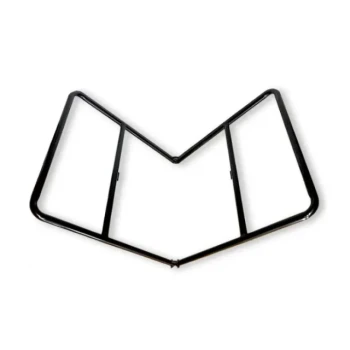At its core, a telescoping outer cover is a protective lid for a beehive, primarily for the Langstroth style. Its defining characteristics are sides that hang down, or "telescope," over the top hive box and a protective metal sheet covering its top surface. This design creates a superior weather-resistant seal for the colony within.
The telescoping outer cover prioritizes maximum protection from the elements over cost and convenience. Its design is a direct solution for shielding a hive from harsh weather, particularly in regions with cold, wet winters.
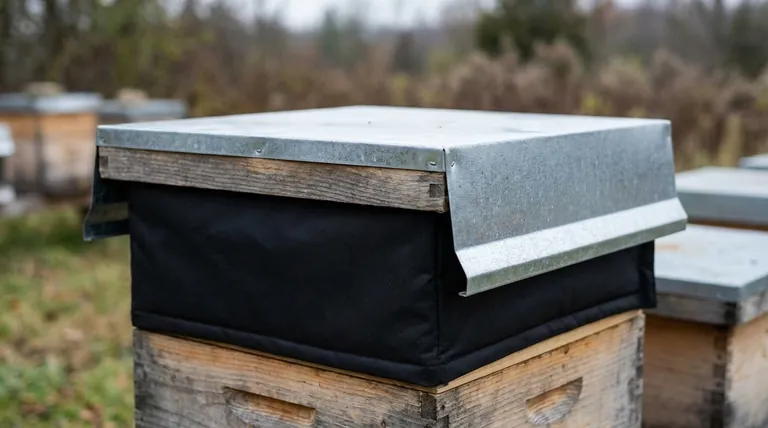
The Anatomy of a Protective Cover
To understand why this cover is so effective, we must look at its key design components. Each element serves a distinct and critical purpose in protecting the hive.
The "Telescoping" Sides
The name comes from the way the cover's sides extend down and fit over the top of the uppermost hive body. This is its most important feature.
This overlap acts like the eaves on a house, preventing rain from running down the exterior and seeping into the seams between hive components. It creates a secure, weather-tight enclosure.
The Galvanized Metal Top
The top surface is almost always covered with a sheet of galvanized metal. This provides a durable, waterproof barrier.
This metal layer shields the wooden components of the cover from sun, rain, and snow, preventing rot and significantly extending the life of the equipment.
The Relationship with the Inner Cover
A telescoping cover is designed to be used with an inner cover. It rests on the rim of this inner cover, not directly on the hive body.
This creates a crucial pocket of dead air between the two covers. This air gap provides excellent insulation, helping the bees maintain a stable internal temperature and reducing dangerous condensation during winter.
Key Benefits for Hive Health
The design choices directly translate into a healthier and more secure environment for the bee colony, especially when facing environmental challenges.
Superior Weather Protection
The combination of the overlapping sides and waterproof top makes the telescoping cover the best option for keeping a hive dry. It is the standard choice in climates with significant rainfall or snowfall.
Enhanced Insulation
The air gap created between the inner and outer covers acts as a thermal buffer. This helps keep the hive warmer in the winter and cooler in the summer, reducing stress on the colony.
Reduced Winter Condensation
Warm, moist air from the bee cluster rises. When it hits a cold surface, it condenses into water, which can drip down and chill or kill the bees. The insulating air gap keeps the inner surface warmer, drastically reducing this risk.
Understanding the Trade-offs
While it offers premium protection, the telescoping cover is not the only option, and it has clear trade-offs compared to simpler designs like a migratory lid.
Higher Cost
This is a more complex and robust piece of equipment. The additional materials, including the metal top, make it more expensive than a simple, flat migratory cover.
Increased Weight and Bulk
The telescoping cover is heavier and more cumbersome to handle. For a commercial beekeeper who may need to open hundreds of hives in a day, the lighter, simpler migratory lid is often faster and more efficient.
Potential for Propolis Seal
Bees use a sticky resin called propolis to seal gaps in their hive. They will often glue the inner cover to the hive body and the telescoping cover to the inner cover, requiring an extra step of prying them apart during an inspection.
Making the Right Choice for Your Apiary
Your choice of hive cover should be based on your climate, your management style, and the number of hives you operate.
- If your primary focus is maximum hive protection in a four-season climate: The superior weather resistance and insulation of the telescoping cover make it the definitive choice.
- If your primary focus is cost-efficiency and speed for a large-scale operation: The lighter, cheaper, and more easily stacked migratory lid is the more practical option.
Ultimately, choosing a telescoping cover is an investment in the long-term health and security of your colony against the elements.
Summary Table:
| Characteristic | Key Benefit | Consideration |
|---|---|---|
| Telescoping Sides | Creates a weather-tight seal, prevents water seepage | Better for harsh climates |
| Galvanized Metal Top | Durable, waterproof, extends equipment life | Higher cost than simpler lids |
| Used with Inner Cover | Provides insulating air gap, reduces condensation | Can be sealed by bees with propolis |
| Overall Design | Superior protection and insulation for the hive | Heavier and bulkier than migratory lids |
Ready to invest in superior hive protection? HONESTBEE supplies durable, commercial-grade telescoping outer covers and other essential beekeeping supplies to commercial apiaries and distributors. Ensure your colonies are protected against harsh weather—contact our wholesale team today to discuss your equipment needs and secure your apiary's future.
Visual Guide
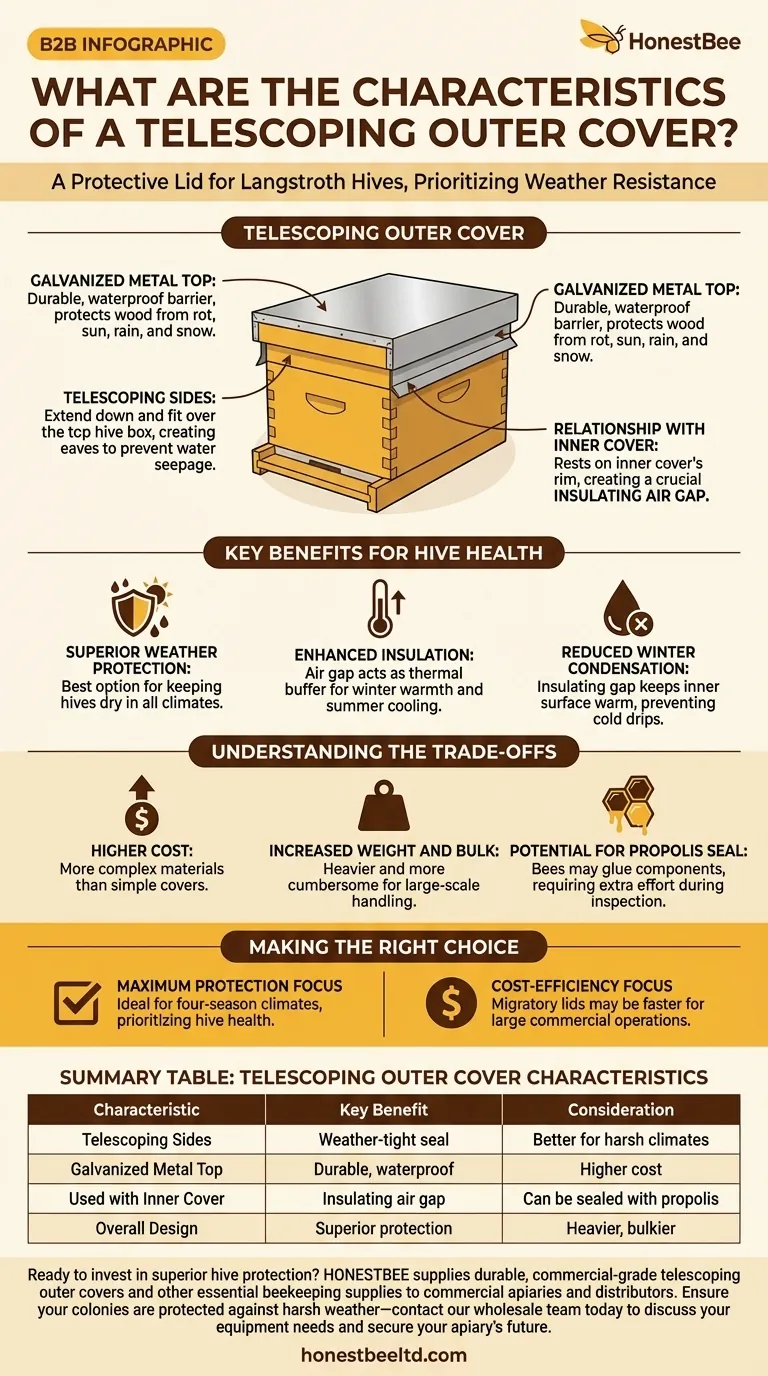
Related Products
- Professional Insulated Winter Hive Wrap for Beekeeping
- Long Langstroth Style Horizontal Top Bar Hive for Wholesale
- Stainless Steel Round Beehive Air Vents for Ventilation
- Professional Drop-Style Hive Handles for Beekeeping
- Wholesales Dadant Size Wooden Bee Hives for Beekeeping
People Also Ask
- Why is it important to insulate beehives during winter? Boost Your Colony's Survival Rate
- Is it always necessary to insulate beehives? A Guide to Winter Survival & Colony Health
- What factors ensure bees stay warm and healthy during winter? Master the 3 Keys to Hive Survival
- What are the durability features of Bee Blankets? Built to Last in Demanding Apiary Conditions
- What is the advantage of an insulated outer cover? Boost Winter Survival & Spring Buildup


